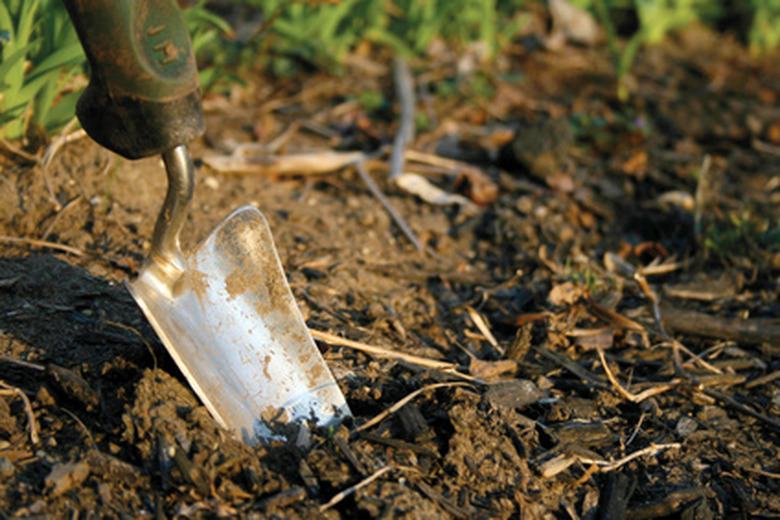How To Calculate The Volume Of Dirt Removed
Determining the volume of dirt removed from the ground plays a role in gardening and home improvement projects, such as creating foundations, building gardening beds and determining the amount of soil or mulch to buy to replace poor dirt in your yard. The hardest part of finding the volume of dirt removed is the digging, because the calculation part takes only moments to do.
Step 1
Measure in inches the length and width of the hole from which you dug out the dirt.
Step 2
Hold the measuring tape at the top of the hole to determine the depth in inches.
Step 3
Divide each of the measures by 12 to determine the number of feet for the length, width and depth measurements. For instance, a hole measuring 12 inches long by 24 inches wide by 6 inches deep would equal 1 foot long by 2 feet wide by 0.5 feet deep.
Step 4
Multiply the length, width and depth of the hole in feet to find the total volume in inches. For the example: 1 foot x 2 feet x 0.5 feet = 1 cubic foot.
- Determining the volume of dirt removed from the ground plays a role in gardening and home improvement projects, such as creating foundations, building gardening beds and determining the amount of soil or mulch to buy to replace poor dirt in your yard.
- Multiply the length, width and depth of the hole in feet to find the total volume in inches.
Step 5
Divide the area by 27 to find the volume of the dirt in cubic yards (because 1 cubic yard = 27 cubic feet). For the example, the cubic yards of the hole would equal 1/27 = 0.037 cubic yards.
Calculate The Volume Of A Room
Knowing the volume of a room or building is important when determining its heating and air conditioning needs. Expressing the volume of a room allows you to compare furnaces and air conditioners that fit your space. In this manner, you will avoid wasting energy by undercooling or overheating a room. Include closets and cubby holes or irregularly shaped areas. Use the same units, whether feet, meters or inches, in all measurements. For example, the room may be an "L" shape with the main part measuring 10 by 25 feet, and the smaller area at 5 by 10 feet. Calculate the volume of each of the sections of the room as shown on the drawing. Calculate the volume by multiplying the measured length and width of the space together, then multiply the result by the height of the room. A 7-foot ceiling gives the room 300 * 7 feet or 2,100 cubic feet.
- Divide the area by 27 to find the volume of the dirt in cubic yards (because 1 cubic yard = 27 cubic feet).
Things Needed
- Measuring tape
- Calculator
